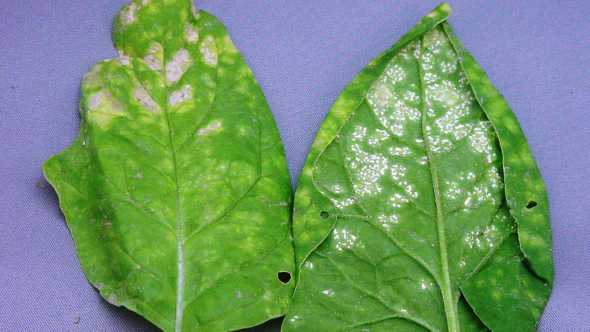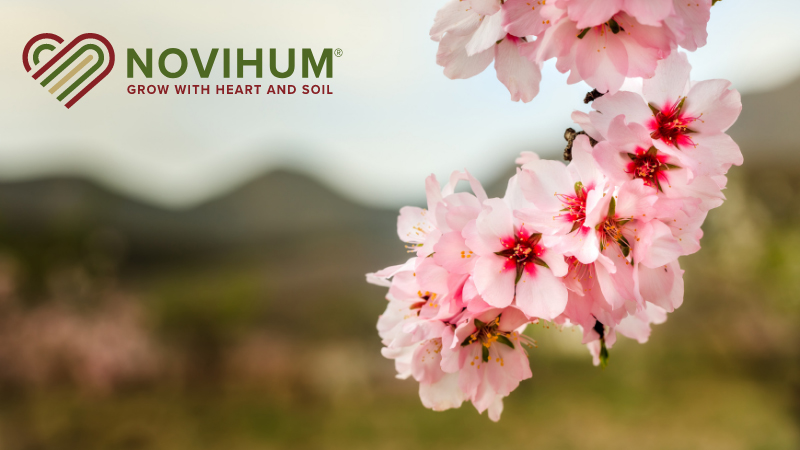Beware The Warning Signs For White Rust Of Spinach
Disease Specs
White rust of spinach was first described in New York in 1907 but is worldwide in distribution. The disease is caused by Albugo occidentalis, which is an oomycete or water mold.

Photo by Paul Bachi
Identification
Symptoms of white rust include yellow lesions on the upper leaf surface and white blister-like pustules on the underside of the leaf. Generally, the upper surface of the leaves remain chlorotic, however in advanced stages, white lesions may form on the upper side of the leaf. Infected plants are weak and might collapse if environmental conditions are favorable for disease development. White rust is an important economic disease, which can cause severe crop losses if not controlled.
Survival And Spread
White rust is an obligate parasite, which requires a living host to grow and reproduce. This pathogen can reproduce by producing both sexual spores (oospores) and asexual spores (sporangia) in a polycyclic disease cycle. In addition to spinach, it also is reported to infect cultivated and weedy amaranths, lambsquarters, and several other weeds.
White rust thrives in cool, moist conditions. Rain, irrigation, fog, or dew lasting for extended periods is ideal for disease development. Leaf surfaces must remain wet for two to three hours or longer to enable infection by the pathogen. The optimum temperature for germination is 54°F. The disease develops most rapidly at 72°F or during periods of cool, humid nights and mild daytime temperatures.
Favorable conditions for the dispersal and infection of white rust are most common in the autumn and spring seasons. Albugo is very temperature sensitive and is rarely a problem under warm, dry conditions.
The thick-walled oospores are the main resting structures, but the mycelium also can survive on weeds and plant debris. When conditions are right, the oospores germinate and produce sporangia on short stalks called sporangiophores, which rupture the epidermis and are consequently spread by the wind. The sporangia can either germinate directly or produce motile zoospores. These zoospores swim in a film of water to a suitable site and each one produces a germ tube that penetrates the stoma. When the oomycete has successfully invaded the host plant, it grows and continues to reproduce.
Management Methods
The pathogen is spread by wind, water, and insects. Management includes use of resistant cultivars, proper irrigation practices, crop rotation, sanitation, and chemical control.
Use of drip or furrow irrigation, planting on beds, and eliminating windbreaks to allow rapid drying can help reduce the incidence of the disease. Fields should be scouted weekly to detect outbreaks and monitor spread. Growers should restrict worker movement through infected fields to limit spread. Long crop rotation to non-hosts combined with strict sanitation of weeds and volunteer spinach is important.
Culled or unmarketable crops should be completely removed and destroyed. No variety is totally resistant to white rust, but some with partial resistance are available.
Both conventional and organic fungicides are available and are useful in limiting spread and yield losses.










